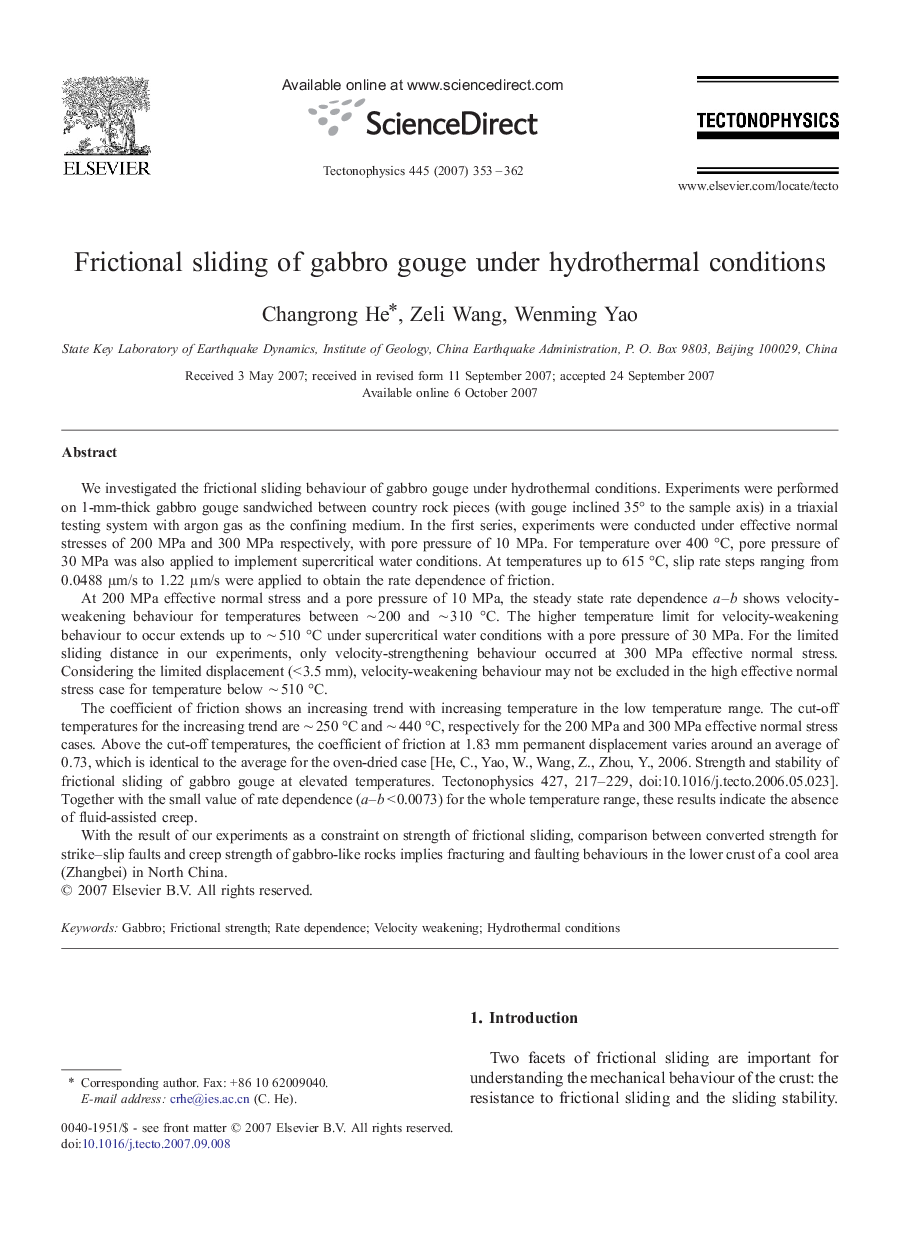| Article ID | Journal | Published Year | Pages | File Type |
|---|---|---|---|---|
| 4694772 | Tectonophysics | 2007 | 10 Pages |
We investigated the frictional sliding behaviour of gabbro gouge under hydrothermal conditions. Experiments were performed on 1-mm-thick gabbro gouge sandwiched between country rock pieces (with gouge inclined 35° to the sample axis) in a triaxial testing system with argon gas as the confining medium. In the first series, experiments were conducted under effective normal stresses of 200 MPa and 300 MPa respectively, with pore pressure of 10 MPa. For temperature over 400 °C, pore pressure of 30 MPa was also applied to implement supercritical water conditions. At temperatures up to 615 °C, slip rate steps ranging from 0.0488 μm/s to 1.22 μm/s were applied to obtain the rate dependence of friction.At 200 MPa effective normal stress and a pore pressure of 10 MPa, the steady state rate dependence a–b shows velocity-weakening behaviour for temperatures between ∼ 200 and ∼ 310 °C. The higher temperature limit for velocity-weakening behaviour to occur extends up to ∼ 510 °C under supercritical water conditions with a pore pressure of 30 MPa. For the limited sliding distance in our experiments, only velocity-strengthening behaviour occurred at 300 MPa effective normal stress. Considering the limited displacement (< 3.5 mm), velocity-weakening behaviour may not be excluded in the high effective normal stress case for temperature below ∼ 510 °C.The coefficient of friction shows an increasing trend with increasing temperature in the low temperature range. The cut-off temperatures for the increasing trend are ∼ 250 °C and ∼ 440 °C, respectively for the 200 MPa and 300 MPa effective normal stress cases. Above the cut-off temperatures, the coefficient of friction at 1.83 mm permanent displacement varies around an average of 0.73, which is identical to the average for the oven-dried case [He, C., Yao, W., Wang, Z., Zhou, Y., 2006. Strength and stability of frictional sliding of gabbro gouge at elevated temperatures. Tectonophysics 427, 217–229, doi:10.1016/j.tecto.2006.05.023]. Together with the small value of rate dependence (a–b < 0.0073) for the whole temperature range, these results indicate the absence of fluid-assisted creep.With the result of our experiments as a constraint on strength of frictional sliding, comparison between converted strength for strike–slip faults and creep strength of gabbro-like rocks implies fracturing and faulting behaviours in the lower crust of a cool area (Zhangbei) in North China.
